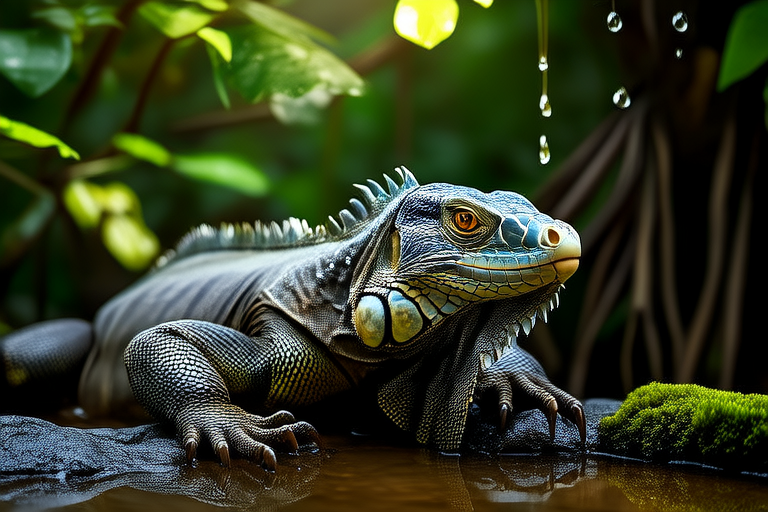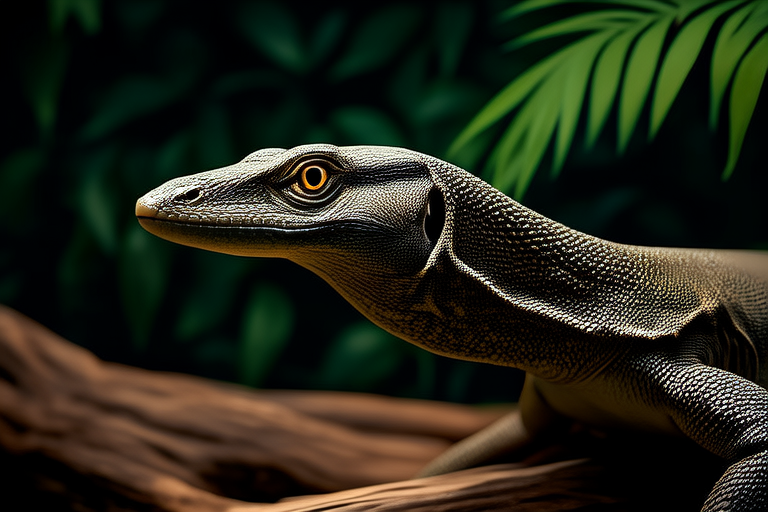From Jungle to Home: The Ultimate Guide to Caring for Your Water Monitor
Welcome to the comprehensive guide on caring for your water monitor, Varanus salvator. This species, native to Southeast Asia, is one of the largest lizards kept as pets. With proper care, they can make fascinating companions. Below, we delve into essential aspects of their care, from setting up the perfect habitat to addressing health concerns.
Choosing the Right Enclosure
Selecting an appropriate enclosure is crucial for your water monitor’s well-being. Given their size and active nature, a large, custom-built enclosure is necessary. For young monitors, a 6-foot by 3-foot tank with a height of at least 4 feet is adequate; adults require enclosures that are at least twice this size.
The enclosure should be equipped with multiple hiding spots, basking areas, and climbing structures. Water monitors enjoy swimming, so a deep water area, about 18 inches deep, is essential. Ensure the water area is easily accessible and includes a secure exit point. A sturdy filtration system is recommended to maintain water quality.
Maintaining Appropriate Temperature and Humidity Levels
Water monitors thrive in tropical environments, requiring specific temperature and humidity conditions. Maintain a temperature gradient within the enclosure, ranging from 85°F to 95°F (29°C to 35°C) during the day and slightly cooler at night. Use heat lamps or under-tank heaters to achieve this.
Adequate humidity levels are also vital. Aim for 70% to 80% humidity, which can be achieved through misting systems or automatic humidifiers. Monitor these conditions closely, as deviations can lead to health issues.
Dietary Needs
Water monitors are carnivorous and need a balanced diet rich in protein. Their diet should consist primarily of live prey such as mice, rats, insects, and fish. Younger monitors may eat more insects and smaller rodents, while adults can consume larger prey items like chicks and rabbits. Feed juveniles daily, reducing to every other day for adults.
Variety is key to ensuring a healthy diet. Supplement their meals with calcium and vitamins to prevent deficiencies. Avoid overfeeding, as obesity can lead to health problems. Always provide fresh drinking water and ensure the water area is clean and maintained.
Understanding Common Behaviors
Water monitors exhibit a range of behaviors indicative of their natural environment. They are highly curious and will explore their surroundings extensively. They may engage in digging, climbing, and swimming. These activities are normal and essential for their physical and mental health.
Some common behaviors include head bobbing, tail whipping, and puffing out their throat. These actions often signal aggression or territoriality but can also be part of their communication. It’s important to understand these behaviors to avoid misinterpretation and potential mishandling.
Health Concerns
Regular veterinary check-ups are essential for maintaining your water monitor’s health. Common health issues include metabolic bone disease, respiratory infections, and parasites. Signs of illness include lethargy, loss of appetite, swollen eyes, or unusual discharge.
Preventative care involves keeping the enclosure clean, providing appropriate nutrition, and monitoring temperature and humidity levels. Early detection and treatment of any health issues are crucial for long-term care.
Advice on Handling and Socializing
Water monitors are generally not suitable for handling due to their size and strength. However, with patience and proper training, some individuals can become accustomed to gentle interaction. Always approach them slowly and calmly, avoiding sudden movements.
Socialization should focus on building trust rather than forcing interaction. Offer treats and positive reinforcement to encourage bonding. Never handle a water monitor roughly or when it is stressed. Respecting its boundaries and providing a stimulating environment will promote a healthier relationship.
Conclusion
Owning a water monitor requires dedication and commitment to their unique care needs. By providing a suitable habitat, maintaining optimal environmental conditions, and addressing their dietary and behavioral requirements, you can ensure your water monitor leads a happy and healthy life. Remember, these animals are best suited for experienced reptile keepers who can commit to their long-term care.

